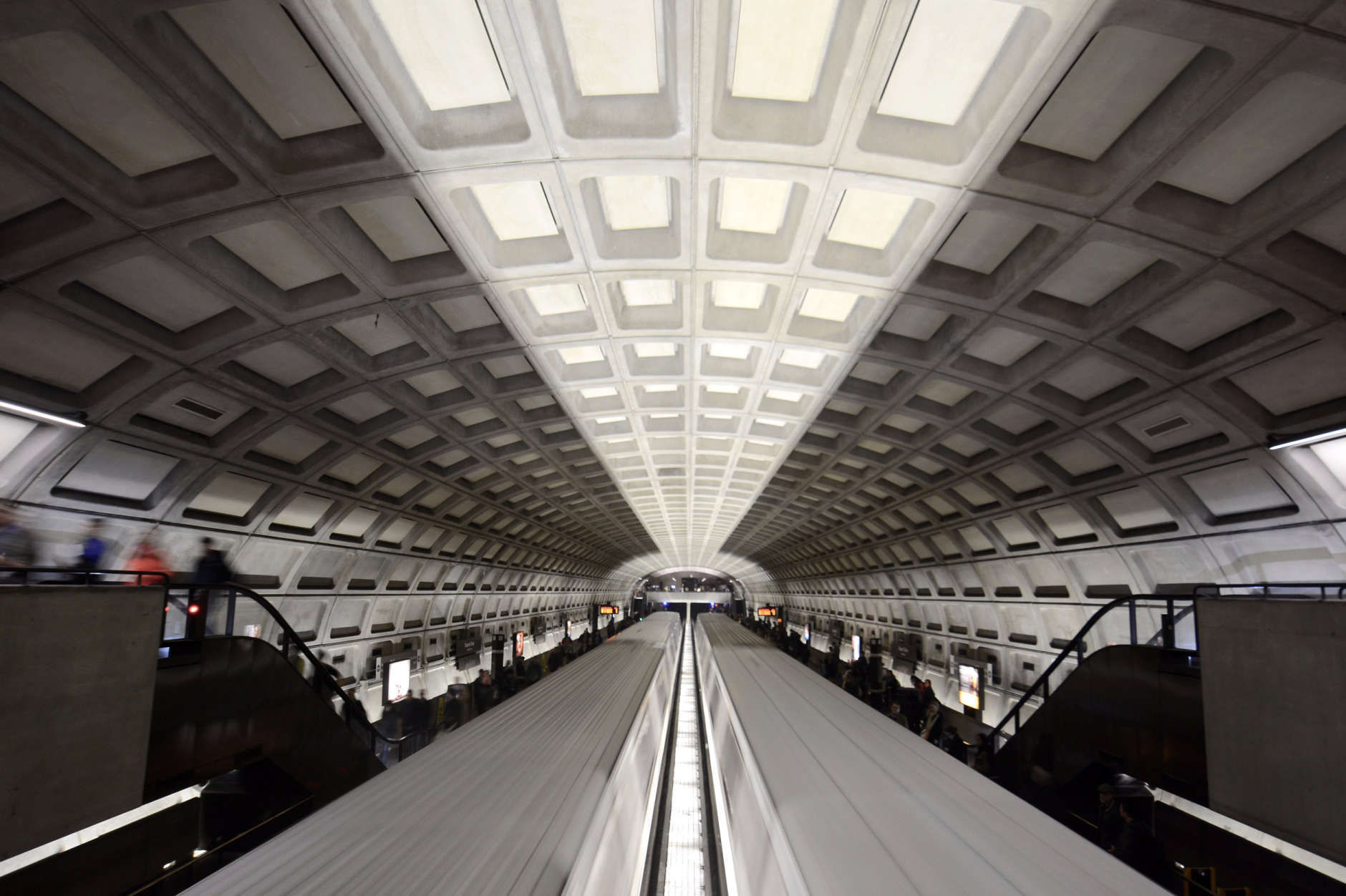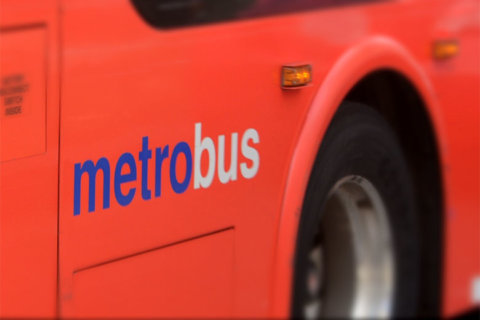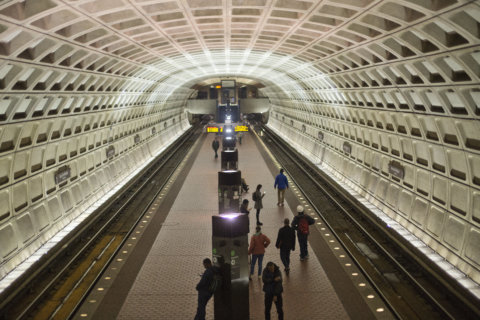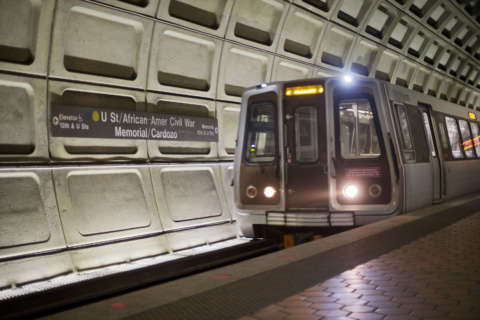
You may pay more to ride Metro next year, but you may also have more time to ride it.
Metro General Manager Paul Wiedefeld’s budget proposal would charge more for rush-hour rail riders and anyone using cash on a bus, but also restore some of the late-night rail service hours that have been taken away by track work.
Hours changes would return Metro to midnight closings Monday through Thursday nights, and add back one hour of service Friday and Saturday nights, to close at 2 a.m. Sunday hours — 8 a.m. to 11 p.m. — would not change.
Metro said it has greatly improved at fully taking advantage of available track work time for maintenance, reducing the need for the hours cuts that began in 2016. The actual scale of the work Metro must do overnight is also becoming clearer.
“In order to expand late-night service, Metro will use late night bus-bridges and single tracking as needed,” a presentation prepared for the Metro Board said.
Those shutdowns would begin after 10 p.m. every night.
Approvals needed
Rush-hour rail riders would pay 10 cents to $1 more per trip, with an increase in the base fare and mileage-based fees and an increase in the maximum rush hour fare from $6 to $7. The minimum rush hour fare would rise from $2.25 to $2.35.

On buses, riders loading cash onto SmarTrip cards or paying in cash would see a 25-cent increase in the fare. Riders using SmarTrip cards alone would continue to pay $2 per trip, but Metro no longer allows negative balances on cards.
Metro would again cut the weekly bus pass cost, this time from $15 to $12, in an effort to get more people to pay for passes and use cards.
Prices for other multiday passes that include both rail and bus would remain unchanged.
Bus riders who use rail would see an additional discount with a change that would make it free to transfer between Metrobus and Metrorail.
The changes would be the first fare increase in three years if approved by the Metro Board.
Hours changes would likely need approvals from the Washington Metrorail Safety Commission, based on evidence Metro will still keep up with needed maintenance work.
Zachary Radford, a spokesman for the safety commission, said in a statement that the panel is reviewing the proposal “in light of safety priorities, such as pending corrective action plans. The WMSC will closely evaluate and monitor any changes to Metro’s operating hours to ensure the agency does not compromise safety progress.”
The hours changes are scheduled to be approved by the Metro Board in February, with the full budget and fare changes due to be approved in March.
Wiedefeld’s budget proposal totals $3.8 billion; the operating budget proposal is $2 billion, while the capital budget plan is $1.8 billion.
Service changes
As part of the proposal, Metro would cut at least nine bus routes entirely and reduce service on others. A few busier lines would see more frequent weekend service, and several limited-stop bus routes would see expanded service.
On Sundays, Metro would run trains every 12 minutes rather than every 15 minutes.
With major weekend track work expected to continue indefinitely, Metro would make weekend rail fares a flat $2. While that would mean no change for shorter trips, it would make longer trips up to $1.85 cheaper per person each way.
The MetroAccess maximum fare of $6.50 would not change, but shorter trips could become more expensive at rush hour due to the rail fare increase.
Any changes would take effect around July 1, 2020.
Among efforts to cover costs, Metro plans to step up the push to sell naming rights and station advertising.
The budget does not factor in costs for Silver Line Phase 2 to Dulles International Airport and Loudoun County, Virginia, since Metro said it does not want to disclose specific costs until after it has finished contracting for certain operations and maintenance work.
Additional risks include the end of Metro’s collective bargaining agreement next summer with Amalgamated Transit Union Local 689, rising paratransit contractor costs, and concerns about federal government spending and shutdowns.
The budget plan does include a $3 million set aside for unexpected major events such as a World Series run.
More improvements
Metro also hopes to push D.C., Virginia and, in one case, Maryland, for additional improvements to help speed up buses to increase ridership and save money.
The requests include bus lanes on Virginia’s busiest bus corridor of Columbia Pike, Maryland’s portion of Georgia Avenue, and in D.C., which include Wisconsin Avenue Northwest, K Street Northwest, U Street/Florida Avenue Northwest, 16th Street Northwest, 14th Street Northwest, Georgia Avenue/7th Street Northwest, North Capitol Street, H Street/Benning Road Northeast, Pennsylvania Avenue, and Martin Luther King Jr. Avenue/Southern Avenue Southeast.
D.C. recently put in bus lanes on H Street Northwest and I Street Northwest, and has others planned.
Metro also wants improved bus signal priority, improvements at the busiest bus stops, and better enforcement of parking rules at bus stops and other blocking of bus lanes and stops.
Metro’s own capital needs forecast shows a $22.5 billion need. The agency believes it can spend $18 billion over the next decade, which won’t even finish tunnel ventilation improvements, water leak fixes or downtown station upgrades.
The biggest planned capital spending in the year starting in July is focused on station-related work tied to round-the-clock shutdowns and related projects.







